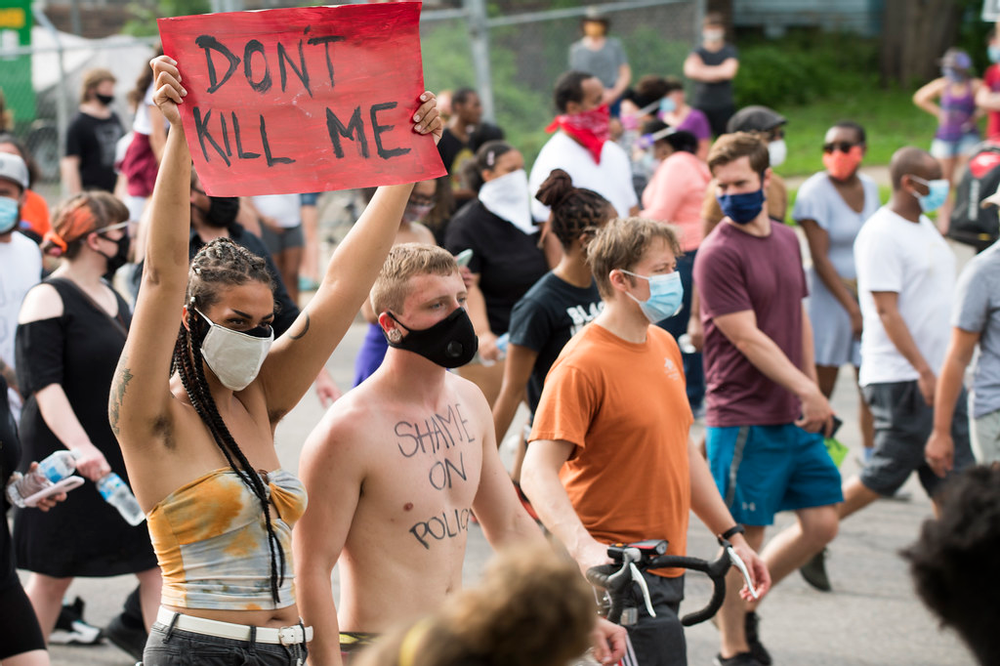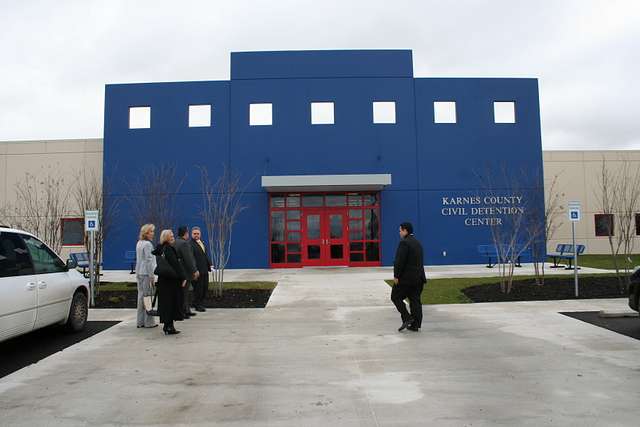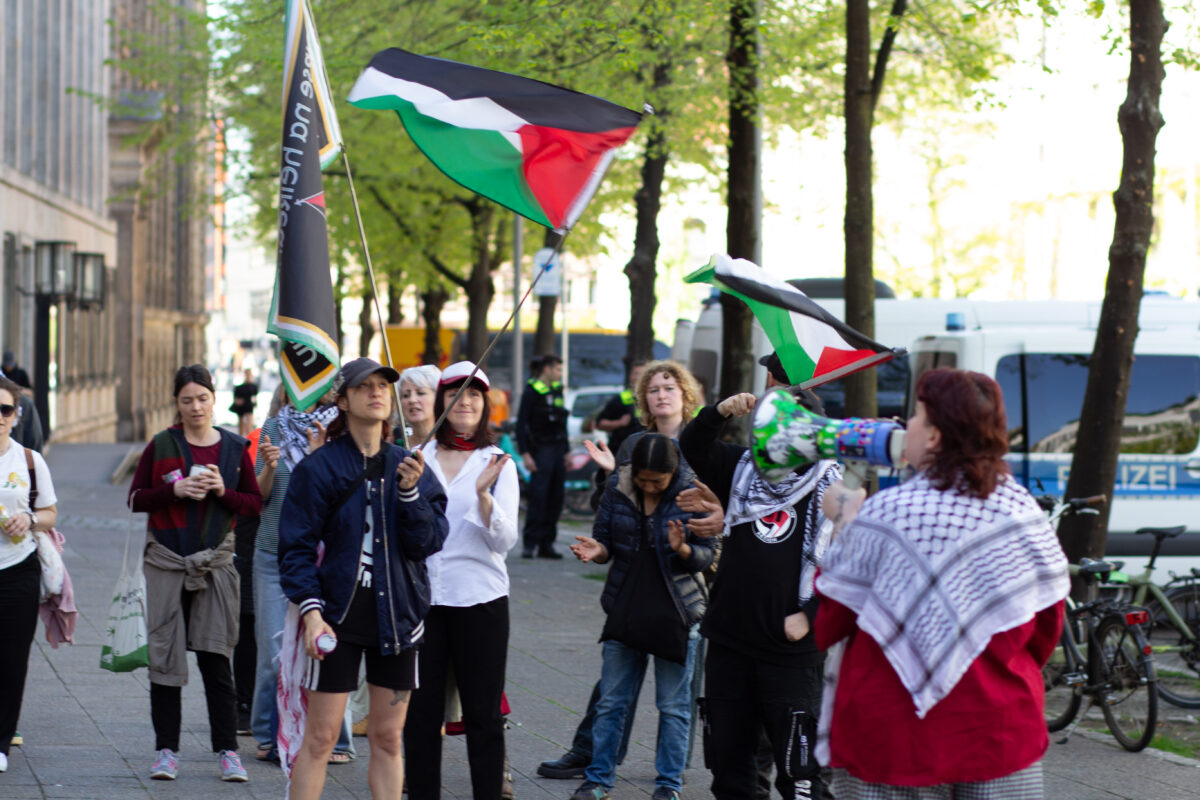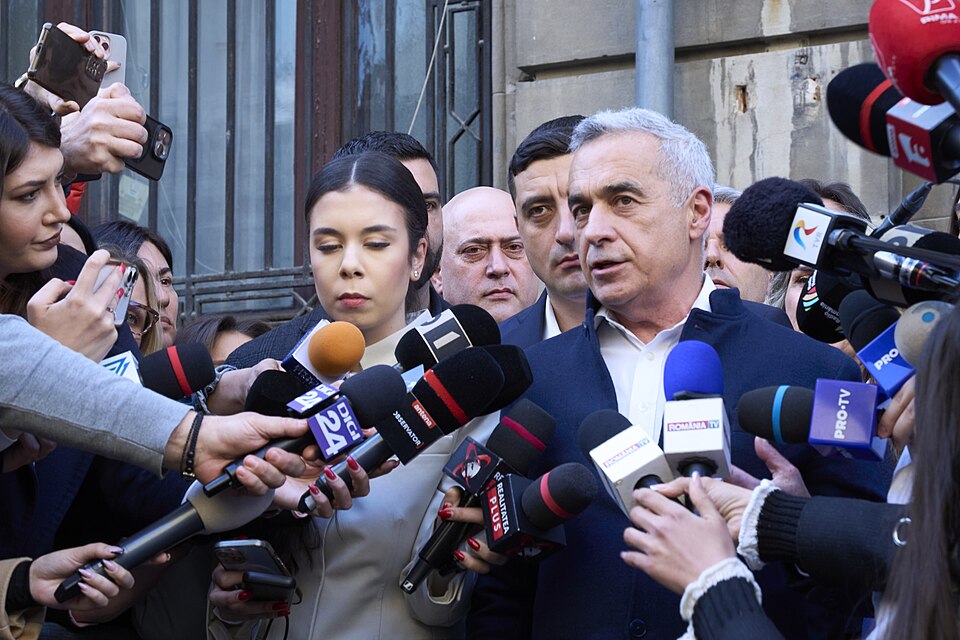The police expected violence, and they wanted the demonstrators to know they were ready to retaliate. Leaving the train at Hermannplatz on May 1st was already difficult at 17:00, due to the masses on their way to the demo. Although this station is one of the busiest in Berlin and built to accommodate hordes of people moving through it, a walk up the stairs revealed the problem: police in riot gear were blocking the exit. Some demonstrators were let through while others were pulled aside, ostensibly to confiscate the glass bottles they were carrying. Confusion was the main feeling as people tried to get out of the station – I had to push past a riot cop who served me with a death glare as I tried to squeeze between her and her colleague.
This was before the protest started. It was even before most people had started walking over to the multicolored flags and banners waving next to the organizers’ rental truck. The gruff, combative attitude of the police officers was a stark contrast to the people milling around Hermannplatz, who were drinking beer or hanging out in the sun. The positive, young atmosphere of the demo, however, had serious undertones: how coronavirus has hit already marginalized groups much harder, how anger needs to be directed not at each other, but at a repressive capitalist system focused on profit over people, how the marginalized are stronger against oppression together.
Demonstrators wanted to be seen and heard, and hoped to make a strong, unified impression on the people that they passed. But peaceful, unified demonstrators with their sights set on exposing the evils of a racist and/or capitalist system are one of the most dangerous groups in the eyes of the state. And that’s any state, not just Germany.
When do the police care?
It’s something that’s not immediately obvious to most people who have heard their entire lives that the police are around to maintain order, and peace. Examples of police violence here and there can seem random and unrelated. A friend who attended an illegal rave with around 1,000 people in Hasenheide during lockdown commented to me: “It’s so weird. The police just showed up but didn’t do anything. People were allowed to leave slowly, and some even kept on dancing.” To which another replied, “Yeah, I guess gay men are way less threatening than people protesting the closure of Syndikat.”
There was some confusion as to why the police would brutally arrest people protesting the eviction of a neighborhood staple that, among other things, sheltered local unhoused people, but wouldn’t break up an illegal party in clear violation of lockdown rules that endangered people through the spread of coronavirus. The conversation ended in shrugs.
But that friend, without completely realizing it, spoke a universal truth of the state: the threat to business-as-usual, to the capitalist order of the few with everything and the masses as wage laborers, to a people divided along race and class lines – is more salient and dangerous than any virus or act of terrorism, no matter how brutal, or heinous a crime. But how do you create a situation in which violent repression of justified dissent is generally accepted by the citizens of a country and the media? Enter, police violence.
Violence as a tool
At football games and Black Lives Matter protests and everything in between, the police are always responding to violence perpetrated by protestors. Reports will state that arrests were made after protestors clashed with police in riot gear, or that the situation turned violent after protestors threw bottles or erected barricades, etc. But is a glass bottle landing on the head of a riot cop encased in armor justification for brutally beating unarmed protestors with batons? How many people erect barricades to attack others?
Of course, there are people at protests who are looking for violence – there are people everywhere who are looking for violence, all the time. But how often do brutal brawls erupt at music festivals? The police need demonstrations to turn violent, so that people will write them off. So that those people who are watching from their windows will in the end say, “Oh those people who were demonstrating, they’re nothing like me. Look how violent they are!”
People, united, are dangerous to the state. And police violence provides an easy way to separate the “good” types of protest from the “bad”. Right-wing protestors don’t threaten the state (clearly there are exceptions to this!!), and neither do gay men partying to techno. But a multiracial, multi-generational, peaceful, anti-capitalist protest? We don’t even have enough police in Berlin for all the violence that will need to ensue!
Karl Marx famously said, “the history of all hitherto existing society is the history of class struggles.” The police are the enforcement arm of the landed class, the capitalist class, and the slave owners. Throughout history and all over the world, they have acted in the interests of these classes, and continue to do so. Police violence at protests that threaten business-as-usual is a tactic to invalidate the demonstrators and their message – to make it so that the people watching can’t relate to the cause. As I can’t say it better, I’ll end with the words of the organizers of the May 1 demo this year (translated from German):
“The actions of the police show that they never intended to allow the demonstration go all the way to Kreuzberg. They deliberately forced an escalation in Neukölln in order to discredit us before the eyes of the population and the press and to divide us. Because there is nothing the rulers fear more than our unity and our solidarity. Therefore, they want to specifically prevent us from uniting in struggle, within the left and with the population. They will not succeed. Now more than ever: Yallah class struggle!”




